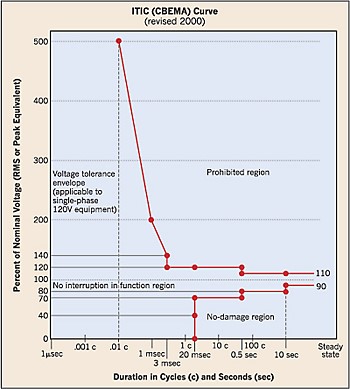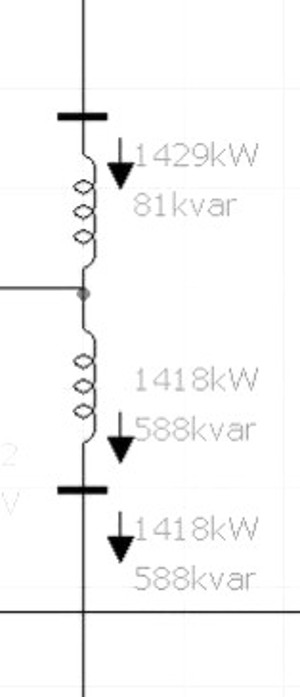Energy Resilience Guaranteed to Stringent Quality Requirements
Power quality means different things to different people, as do definitions of “electrical outages”. Some utilities choose to define a “loss of power” event only as those outages lasting greater than five minutes, while other utilities define outages as being greater than one minute. A typical utility will have 1-3 power loss events per year that last greater than one minute, with total loss of power minutes over the course of a year totaling 30-60 minutes. Along with the more noticeable “black-out” events, are momentary outages lasting less than one minute that typically occur at a rate of 8-15 times per year.
Unnoticed by the average consumer of electricity, but highly disruptive to sensitive equipment, are the typical 20-30 power quality events that regularly occur on each and every electrical transmission and distribution line. These sags and swells in voltage that last between 3 to 60 cycles in time occur regularly from normal utility switching routines. These normal daily patterns of events have increased over the last 10 years, primarily from deeper penetration levels of intermittent renewable energy sources, creating complexity that can play havoc with transmission and distribution systems.
In order to protect facility equipment and production processes from utility outages and power quality events with microgrids, thresholds to power fluctuations must be defined early in the development process in order to properly define the minimum levels of power quality to be provided. This is often a challenging time during project development since the minimum power quality thresholds for many operations are unknown. The widespread use of power quality standard thresholds for processes and equipment sets generally don’t exist, plus the availability of electrical supply baselines are not something utilities typically provide. Also, utility statistics typically do not cover momentary wave form distortions such as sags, swells, impulses, and harmonics; only complete loss of voltage for greater than one to five minutes.
In the absence of detailed power quality requirements, the Information Technology Industry Curve (ITIC) can be used as an energy resilience guarantee proxy for most sensitive electronic equipment. The ITIC is formerly the Computer and Business Equipment Manufacturers Association (CBEMA) curve. During the last few decades of our digital revolution, the CBEMA curve grew from a design criteria used for large mainframe computers to one that includes many common industrial control devices that are sensitive to power quality fluctuations. Variable frequency drives (VFDs), control boards for industrial equipment like boilers and chillers, and even programmable logic controllers (PLCs) all have been rigorously tested for performance against the voltage characteristics of the ITIC curve.
The Information Technology Industry Curve
ITIC
Curve
(formerly CBEMA)

The ITIC curve illustrates susceptibility to voltage anomalies with the horizontal x-axis representing the duration of the event and the vertical y-axis indicating the percent of voltage anomaly.
The center of the curve shows the acceptable voltage area. Voltage values above the envelope have the potential to cause overexcitation and overvoltage trips. Voltages below the envelope are assumed to cause the load to drop out due to lack of energy.
In other words, the concept is that if the supply voltage stays within the acceptable power area, sensitive equipment will operate well.
Energy Resilience Guarantee: ITIC Power Quality at Five 9’s (99.999%) Availability
Providing utility-scale power with an energy resilience guarantee of greater than 99.999% availability that is continuously conditioned to ITIC power quality levels, as is the case with the NIBC microgrid, required differentiated equipment sets, innovative electrical topologies, and most importantly, an empirically driven development process that was able to quantify marginal increases in reliability and availability versus marginal increases in capital and operating cost.
With all microgrids, early development efforts need to be open to using commercial off the shelf (COTS) equipment configured in unconventional ways in order to meet stringent power quality standards, reliability requirements, and energy resilience guarantee.
As an example, the NIBC Microgrid project development team was faced with the challenge of reducing capital and operating costs for a proposed microgrid without sacrificing demonstrable power quality or reliability.
Further complicating this challenge was the fact that feeders from the generation facility not only needed to be isolated from the utility, but also utility’s two incoming power sources needed to appear to the feeders as being four separate sources for purposes of separation and redundancy.

The configuration chosen by the electrical design team was to utilize an isolated-parallel (ISO-parallel) distribution topology that utilized the Rotary UPS units in a unique configuration such that the redundant unit could be shared by the other units, thereby reducing capital costs, increasing reliability, and enabling energy resilience guarantees. The ISO-parallel topology provides fault isolation between output busses and also provides load-sharing between standby generation units, thus reducing the total quantity of units required to meet load swing requirements. The system redundancy required using the ISO-parallel configuration became a fraction of the total operating load.
Also, essential to this topology was the use of isolating chokes that were used for each feeder bus. These chokes have a high impedance, thus filtering out upstream transients and allowing reactive power (VARS) from the Rotary UPS units to backfill as necessary. A diagram of these chokes is shown to the upper right.


